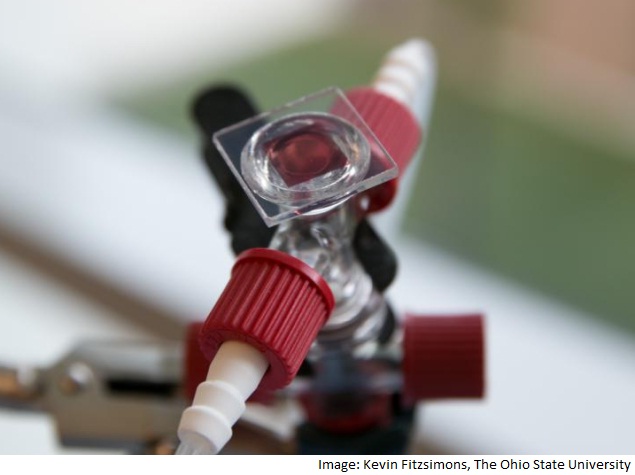- Home
- Science
- Science News
- 'Solar Flow' Device to Outperform Traditional Batteries: Study
'Solar Flow' Device to Outperform Traditional Batteries: Study

"That 20 percent energy saving comes from sunlight which is captured by a unique solar panel on top of the battery," said Yiying Wu, professor of chemistry and biochemistry at Ohio State.
The solar panel is now a solid sheet, rather than a mesh as in the previous design of the world's first solar air battery developed by the same team last year.
Another key difference comes from the use of a water-based electrolyte inside the battery.
Because water circulates inside it, the new design belongs to an emerging class of batteries called aqueous-flow batteries.
"The truly important innovation here is that we have successfully demonstrated aqueous flow inside our solar battery," Wu said.
It is also totally compatible with current battery technology, very easy to integrate with existing technology, environmentally friendly and easy to maintain.
The solar flow battery could bridge a gap between today's energy grid and sources of renewable energy.
"This solar flow battery design can potentially be applied for grid-scale solar energy conversion and storage, as well as producing 'electrolyte fuels' that might be used to power future electric vehicles," said Mingzhe Yu, doctoral student and lead author of the paper appeared in the Journal of the American Chemical Society.
The team's ultimate goal is to boost the solar cell's contribution to the battery past its current 20 percent maybe even to 100 percent.
"Our next step is to really achieve a fully solar-chargeable battery."
For the latest tech news and reviews, follow Gadgets 360 on X, Facebook, WhatsApp, Threads and Google News. For the latest videos on gadgets and tech, subscribe to our YouTube channel. If you want to know everything about top influencers, follow our in-house Who'sThat360 on Instagram and YouTube.
Related Stories
- Samsung Galaxy Unpacked 2025
- ChatGPT
- Redmi Note 14 Pro+
- iPhone 16
- Apple Vision Pro
- Oneplus 12
- OnePlus Nord CE 3 Lite 5G
- iPhone 13
- Xiaomi 14 Pro
- Oppo Find N3
- Tecno Spark Go (2023)
- Realme V30
- Best Phones Under 25000
- Samsung Galaxy S24 Series
- Cryptocurrency
- iQoo 12
- Samsung Galaxy S24 Ultra
- Giottus
- Samsung Galaxy Z Flip 5
- Apple 'Scary Fast'
- Housefull 5
- GoPro Hero 12 Black Review
- Invincible Season 2
- JioGlass
- HD Ready TV
- Laptop Under 50000
- Smartwatch Under 10000
- Latest Mobile Phones
- Compare Phones
- Moto G15 Power
- Moto G15
- Realme 14x 5G
- Poco M7 Pro 5G
- Poco C75 5G
- Vivo Y300 (China)
- HMD Arc
- Lava Blaze Duo 5G
- Asus Zenbook S 14
- MacBook Pro 16-inch (M4 Max, 2024)
- Honor Pad V9
- Tecno Megapad 11
- Redmi Watch 5
- Huawei Watch Ultimate Design
- Sony 65 Inches Ultra HD (4K) LED Smart TV (KD-65X74L)
- TCL 55 Inches Ultra HD (4K) LED Smart TV (55C61B)
- Sony PlayStation 5 Pro
- Sony PlayStation 5 Slim Digital Edition
- Blue Star 1.5 Ton 3 Star Inverter Split AC (IC318DNUHC)
- Blue Star 1.5 Ton 3 Star Inverter Split AC (IA318VKU)

















